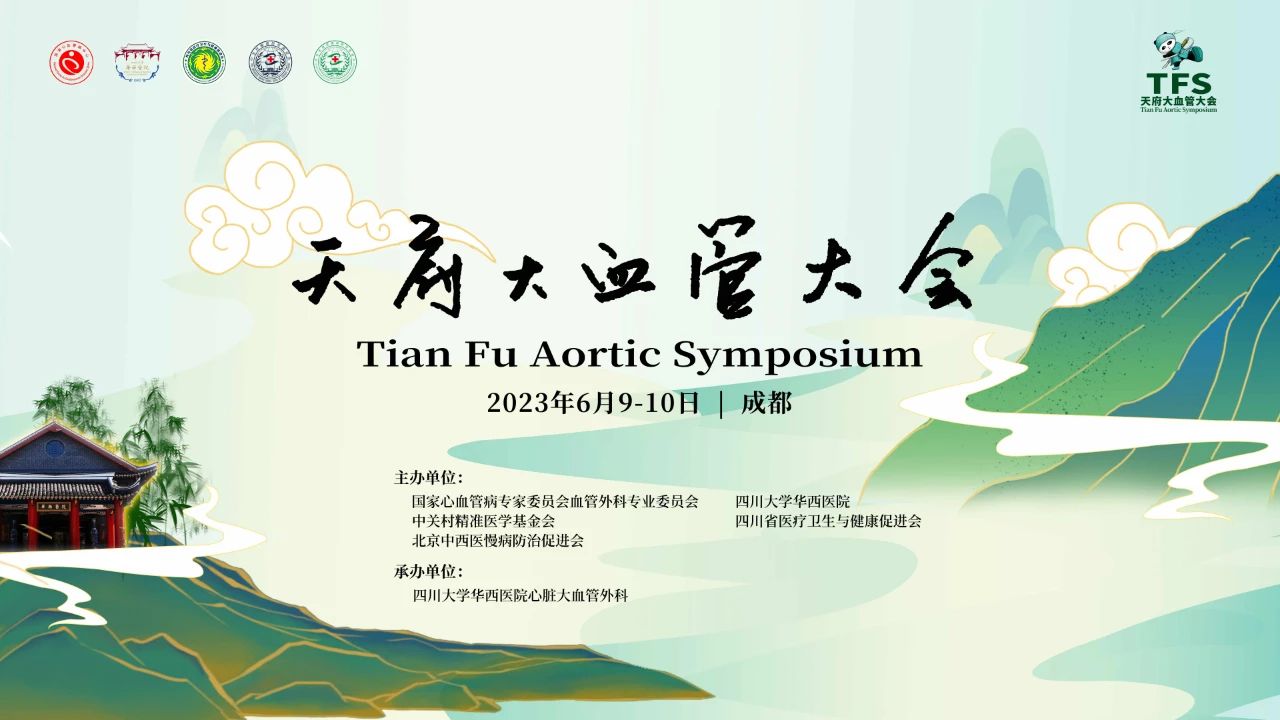
On June 10, 2023, the Tianfu Conference on Large Vessels was successfully held in Chengdu, which was organized by the Vascular Surgery Committee of the National Committee of Experts on Cardiovascular Diseases, West China Hospital of Sichuan University, the Zhongguancun Foundation for Precision Medicine, the Sichuan Society for Promotion of Medical Health and Wellness, and the Beijing Society for Promotion of Prevention and Treatment of Chronic Diseases in Traditional Chinese Medicine and Western Medicine, and was hosted by the Department of Cardiac and Large Vessel Surgery of West China Hospital of Sichuan University. This conference focuses on valve TEVR therapy, aortic Hybrid therapy, TEVAR and EVAR therapy, adhering to the concept of "standardization, cooperation, innovation, and communication", and taking the development of clinical technology and quality control as the fundamental, exploring the new technology, new ideas, and listening to the voice of the foreword.
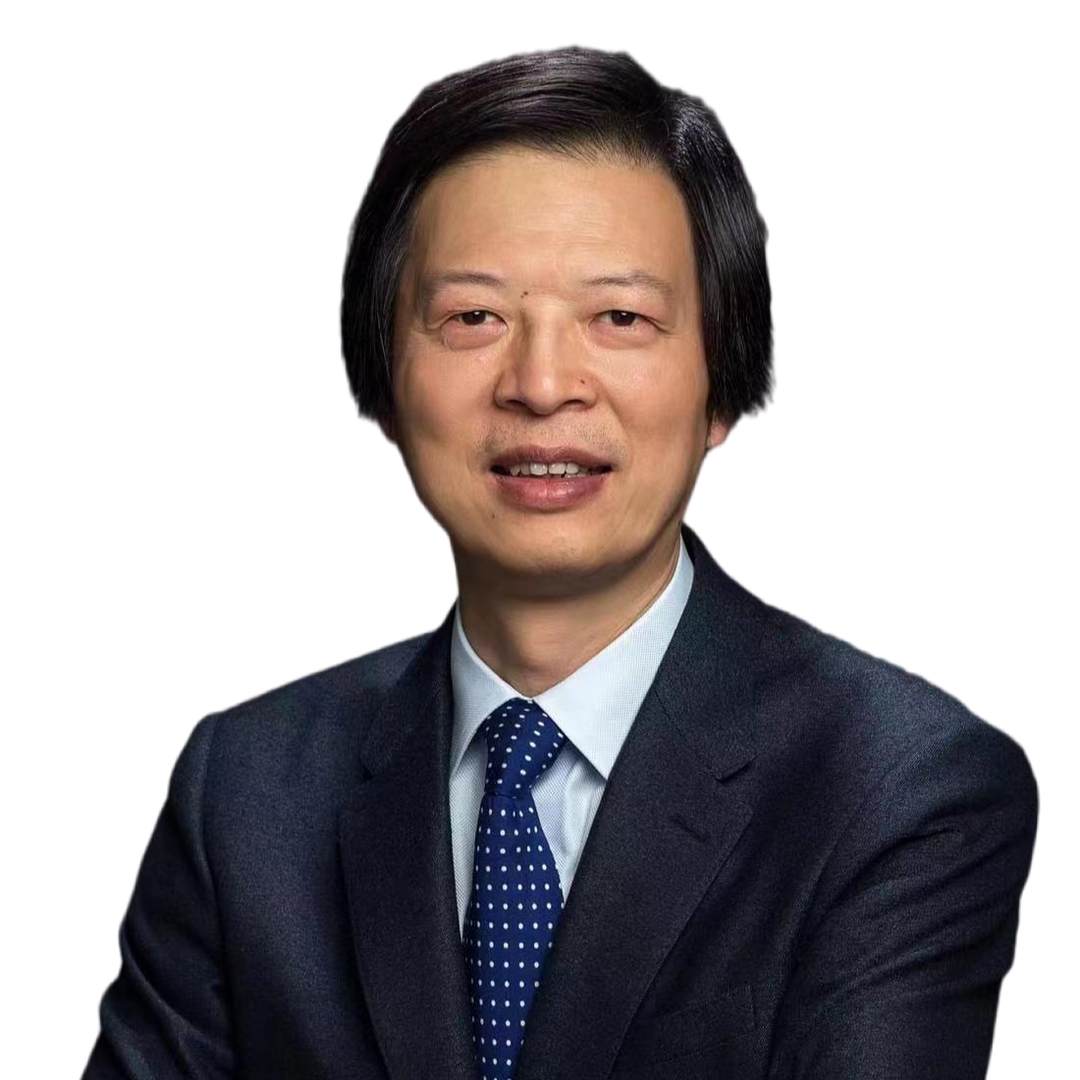
Prof. Shu Chang
Director, Vascular Center, Fu Wai Hospital, Chinese Academy of Medical Sciences, China
Director, Institute of Vascular Disease, Central South University
Director of Vascular Center, The Second Xiangya Hospital, Central South University, China
At the meeting, Prof. Shu Chang of Fu Wai Hospital, Chinese Academy of Medical Sciences, gave a fascinating online lecture titled "Progress and Future of Minimally Invasive Treatment of Aortic Diseases".
At the beginning of the meeting, Prof. Shu firstly introduced the classification and epidemiological characteristics of aortic diseases, and pointed out that the incidence of aortic diseases in China is increasing year by year. Prof. Shu then introduced the research progress of endoluminal repair of the ascending aorta at home and abroad, and pointed out that the world's first "Endo-Bentall" surgery was successfully carried out in Argentina, which created a historical precedent for this type of surgery. Prof. Tilo Kölbel from Europe demonstrated "TAVI in TEVAR in LVOT" at Charing Cross, which was a very thrilling procedure.
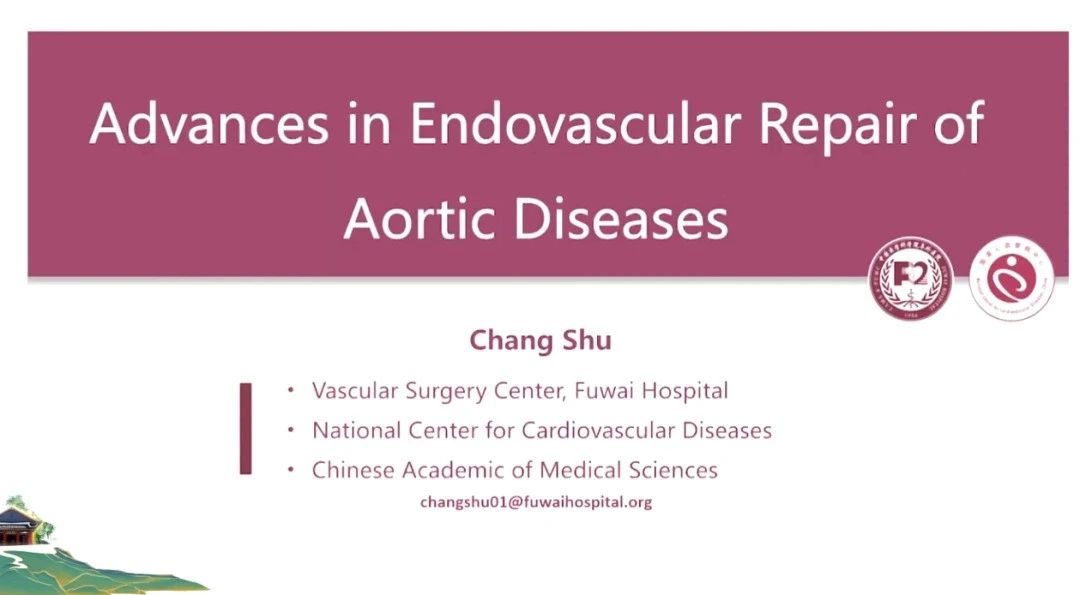
In aortic arch disease, some patients can be treated by minimally invasive treatment. Due to the complexity of the aortic anatomy, Prof. Shu and many other experts in China have created the "HENDO" system, which is an individualized treatment strategy. The "Chinese Expert Consensus on Hybridization Techniques for the Treatment of Aortic Lesions Involving the Arch" has been formed, and the consensus has been gradually accepted by experts in many countries and regions in Asia-Pacific.
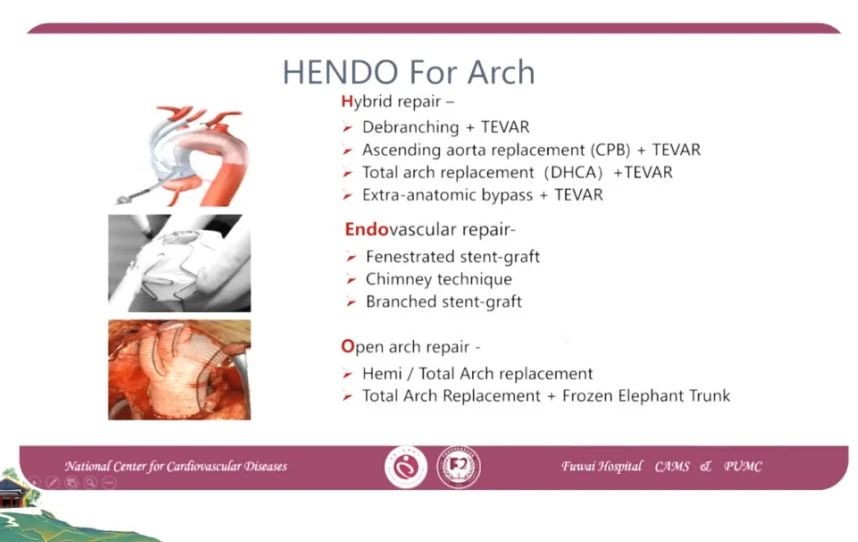
Prof. Shu pointed out and emphasized that the "HENDO" system mainly includes aortic hybridization, endoluminal repair and open aortic surgery. Prof. Shu also introduced the detailed treatments of hybridization technique type I-IV.
Total endoluminal repair techniques have opened up new horizons in the treatment of aortic arch disease, including chimney technology (parallel stenting), in situ windowing, extracorporeal windowing, and branching stenting. In these four areas, many manufacturers are also competing in research and development or waiting for the market.
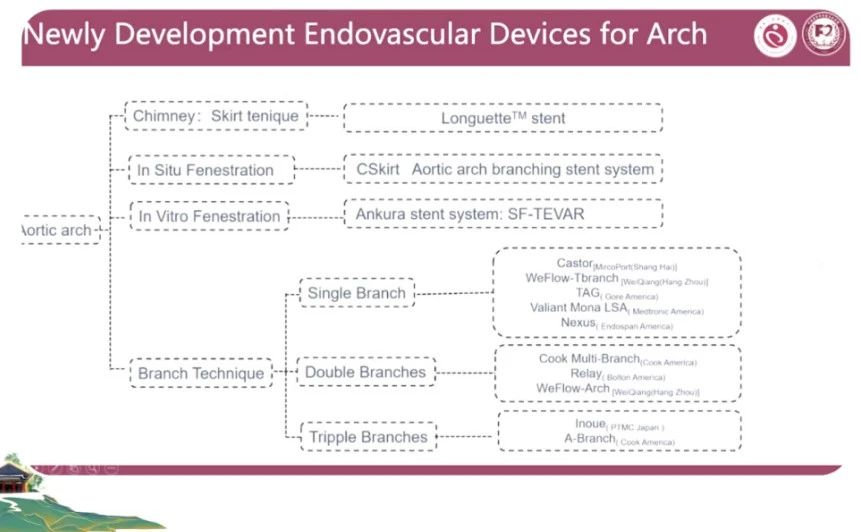
Chimney technology often has problems such as internal leakage, so Prof. Shu Chang's team and CCTF jointly developed the Longuette™ Coated Stent System. The 12-month follow-up results showed that the incidence of internal leakage was only 1.4%, indicating that the Longuette Parallel Stent plays the role of the external softness and internal rigidity, which can effectively prevent and solve the "internal leakage" problem. This indicates that the Longuette Parallel Stent can effectively prevent and solve the problem of "endoleak.
The windowing techniques were categorized into ex vivo pre-opening and in situ windowing techniques. Prof. Shu explained the Ankura™ stent with self-developed positioning method for extracorporeal windowing (S-Fenestration TEVAR technology). The unique dorsal reinforcement, anterior "8" and lateral "0" markings on the lesser curvature of the stent eliminates the need for sewing markers.
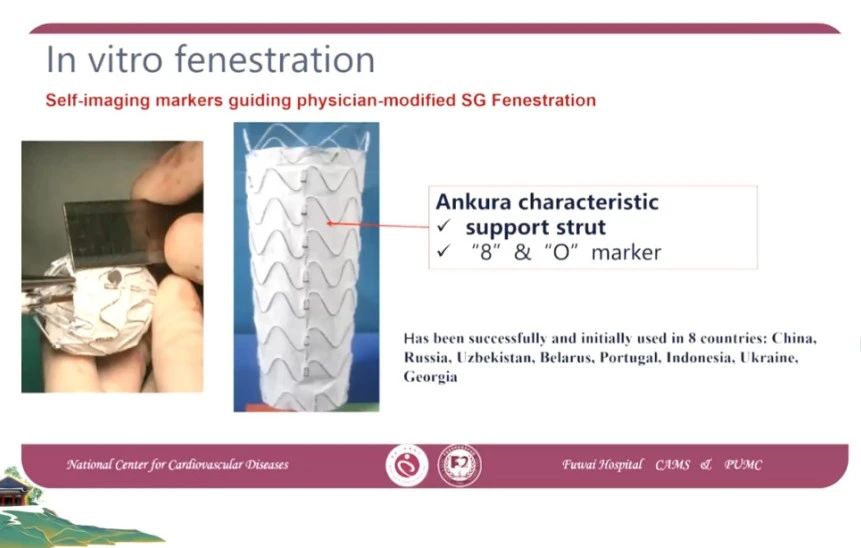
The main advantage of extracorporeal opening is that only one puncture point of the femoral artery is needed, which can effectively shorten the operation time, within 30 min for a single branch, 30 min~1 hour for double branches, and 1~1.5 hours for triple branches, and this technique is now in use in more than 20 countries around the world.
For patients who are unable to undergo extracorporeal windowing in the aortic arch, Prof. Shu's team, in conjunction with First Health, has developed the Aortic Arch Stent In Situ Window Opening System, which consists of the Ankura™ Plus aortic arch main stent, the CSkirt™ aortic arch branching stent, and the Futhrough™ aortic overlay stent rupture system. The trial has been carried out in more than 30 centers nationwide, enrolling more than 130 patients, and the results of the trial show good results.
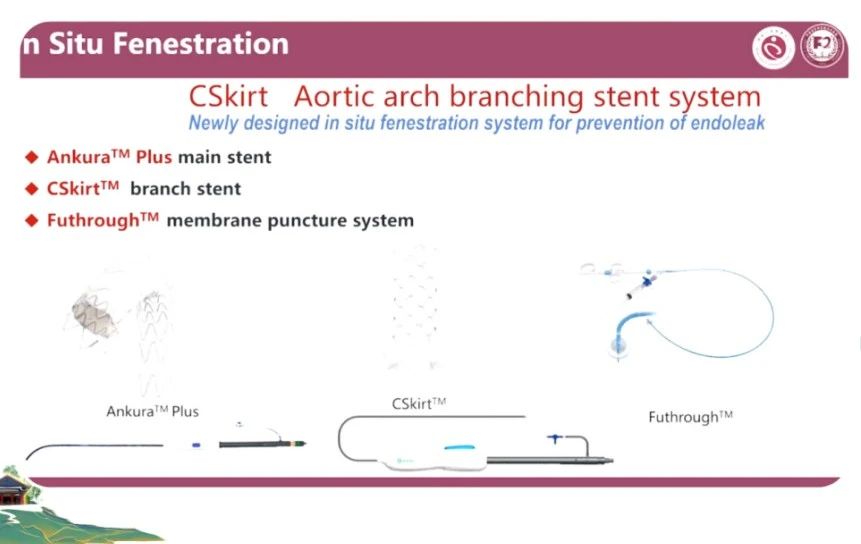
When Prof. Shu talked about branching stent technology, he said that when it comes to branching stent, Castor® stent is undoubtedly the most preferred choice, which has been applied in China for a long time, and now it is gradually going to the international market. In addition, Prof. Shu introduced the research status of branch stent at home and abroad. The We Flow series of aortic arch branching stents developed by Prof. Guo Wei's team in China. Prof. Tilo Kölbel's team in Germany used a new type of stent to reconstruct the three branches of the arch, but the biggest problem was the occurrence of cerebral infarction after the operation. Therefore, the one-piece triple-branch stent system, designed and developed by Prof. Shu himself, provides a new solution for total endoluminal treatment of aortic arch lesions.
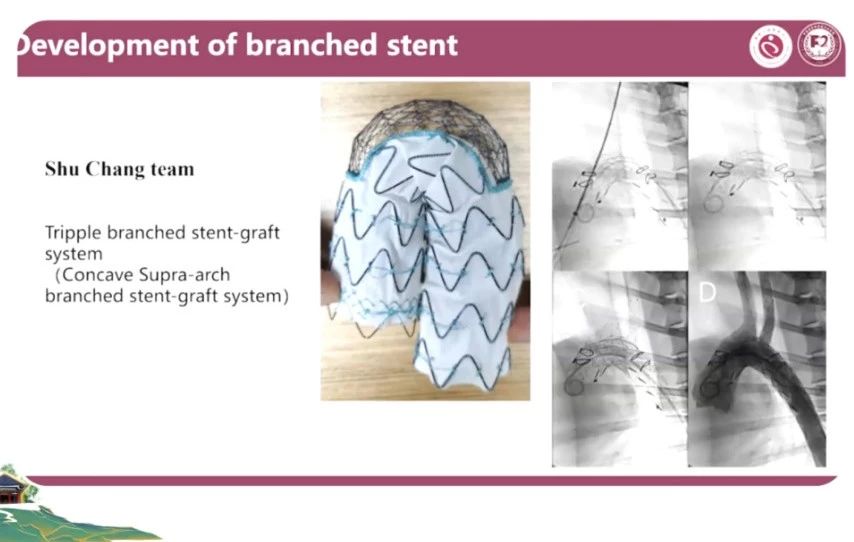
When talking about descending aorta treatment, Prof. Shu mentioned Castor® Branching Aortic Coated Stent, whose unique proximal coated and distal perforated design reduces the incidence of spinal cord ischemia and paraplegia risk in patients after surgery. He pointed out that domestic and foreign experts used the Octopus technique in the early days, which has the advantages of easy access and low incidence of paraplegia, but its biggest disadvantages are internal leakage and long-term patency rate. Therefore, in the field of thoracoabdominal aortic therapy, various device manufacturers are also in the race to develop.
Finally, Prof. Shu Chang explained the treatment progress of abdominal aorta. He pointed out that the treatment of abdominal aorta was mostly open surgery in the early days, and now it is mainly endoluminal treatment. However, Prof. Shu called for the treatment of abdominal aorta to return to normal, and open surgery can be used to treat young patients. Prof. Shu also pointed out that the Cuff opening technique is suitable for straight, proximal tumor necks without severe distortion. In addition, the parallel stenting technique is a concise and effective treatment for the difference in height between the two renal arteries, especially if the proximal distortion is angular.
Prof. Shu concluded that the treatment of aortic diseases is gradually transitioning from open surgery to hybridization and endoluminal repair, and minimally invasive treatment is the trend of the future. The multiple and complex anatomical features of the aorta dictate the choice of individualized treatment, so hybridization, endoluminal repair and surgery should be developed together to complement each other.


